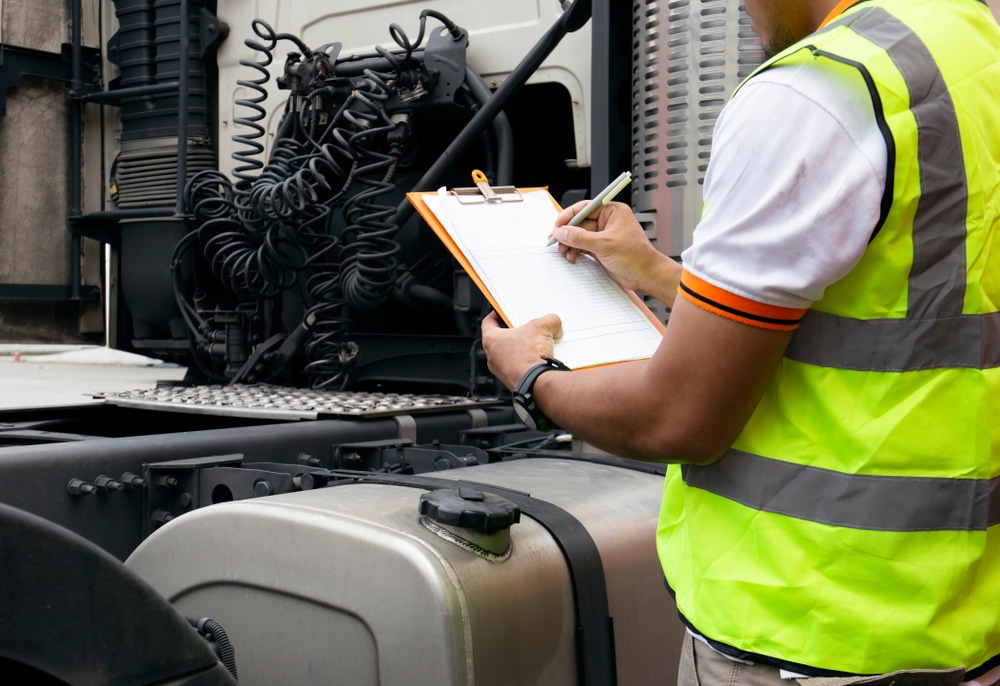Roadside inspections might feel overwhelming, but they are necessary to ensure your fleet stays in excellent shape to provide your driver’s safety.
Since this year’s CVSA International Road Check is due between the 16th and 18th of May, it’s essential to gear up. Below we discuss the top six expert-recommended tips to help you prepare for the upcoming CVSA road check:

1. Stay On-Top of Truck Maintenance
A CSVA-certified compliance enforcement inspector will inspect your fleet’s truck maintenance during the annual road check.
Typically, the inspector examines the vehicle’s brake systems, cargo securement, lighting devices, exhaust systems, fuel systems, and tire and rim condition.
2. Follow Hours-of-Service Rules
Research shows hours-of-service violations represented over 8.1% of all driver out-of-service conditions. Since the government regulates HOS, it’s crucial to ensure compliance.
To avoid non-compliance, you must follow the following hours-of-service rules and regulations:
- A driver can drive up to 10 hours maximum after spending eight successive hours off-duty
- A truck driver can maximize their 10-hour driving or 15-hour off-duty time in case of poor weather conditions
- A driver must not exceed 15 work hours after eight hours off-duty
- The truck drivers cannot follow the 60/70 rules for 7 or 8 consecutive days
- A driver must spend up to 8 hours in the sleeper berth (whether into two off-duty periods)
- Another step in preparing for this step is ensuring drivers understand your fleet’s ELD devices and operation.
3. Compile the Necessary Documents
Another step in preparing for the CSVA road check is gathering the necessary documentation. Typically, the CSVA inspector requires the following items:
- A valid CDL and Federal Medical Examiner’s Certificate
- HOS and shipping documentation
- Motor carrier registration
- Evidence of annual inspection for your fleet’s trucks
- A current and up-to-date permit book
- A copy of your insurance certificate
- A copy of your Hazardous Material certificate
- A charged and secure fire extinguisher
- Emergency equipment required to ensure safety
4. Look Out for ELD Compliance
The Electronic Logging Device (ELD) mandate is another must-add requirement in your pre-inspection checklist. Failing to comply with updated ELD regulations can place drivers’ out-of-service.
Therefore, your fleet must understand and follow ELD rules to ensure successful compliance and avoid violations.
5. Conduct On-Road Inspections
Conducting an on-road vehicle inspection can help your team prepare for the upcoming CSVA road check. During these inspections, you must ensure your vehicle has appropriate pressure and eliminate wear and tear.
In addition, you must maintain the brake system to avoid damage and wear and tear.
6. Obey Traffic Rules
An excellent way to avoid a roadside inspection is to encourage drivers to follow traffic laws. A CSVA inspector will likely pull you over if you disobey safety rules.
- Obey traffic signals and signs
- Ensure you don’t drive over speed limits
- Steer clear of using cell phones
- Wear the seatbelt appropriately
The Bottom Line
Once you follow the precautions, we discussed to ensure your vehicles are up-to-date and compliant, you can enjoy knowing that your drivers (and others) are safe.
In addition, you won’t have to stress about the CSVA annual road check! If you’re ready to become a professional truck driver, visit Bay & Bay to join our certified and experienced fleet.
